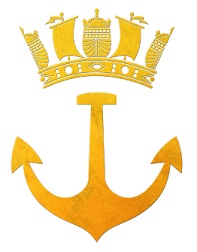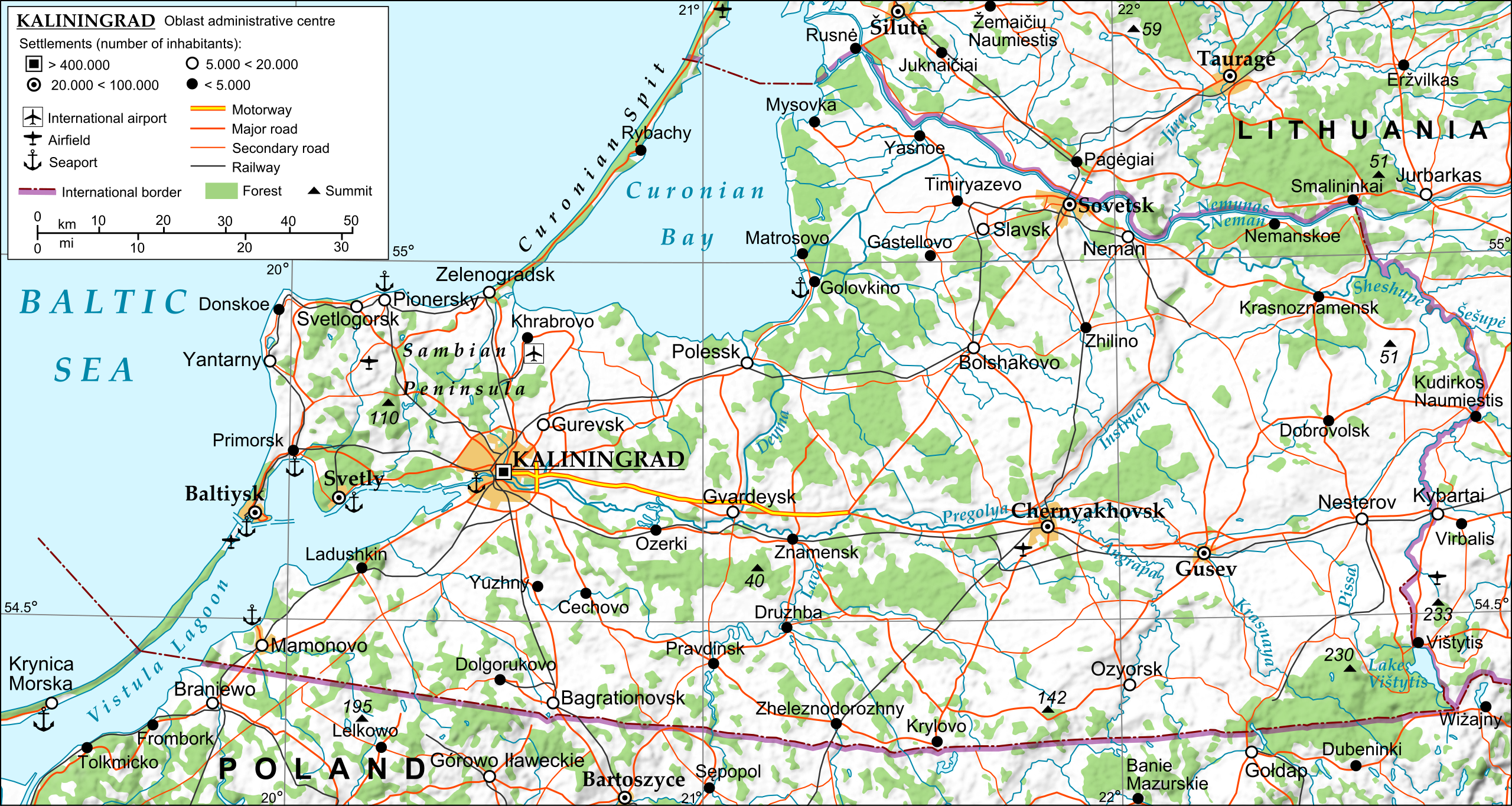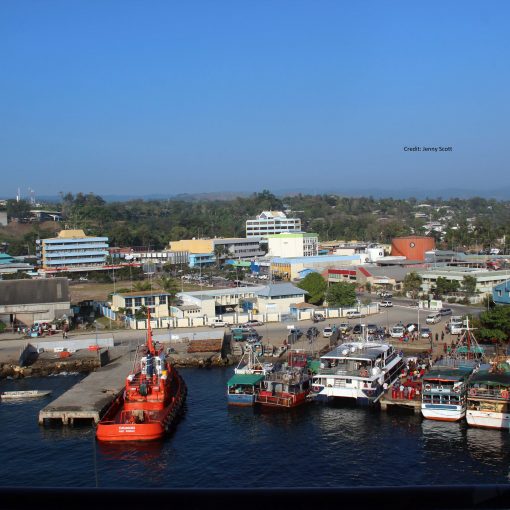By Jeff G. Gilmour, 25 September 2025
In this article, I have tried to identify what, in my opinion, are three significant geographic areas in NATO that are potential weak spots which could be utilized by Russia to initiate offensive military action in the future.
The three areas of geographic concern are as follows:
- Norway’s Svalbard islands;
- Kaliningrad in the Baltic Sea; and
- Canada’s Arctic encompassing its three territories.
Norway’s Svalbard Islands
A 1925 treaty confirming Norwegian sovereignty over Svalbard, but also featured Russian mining operations that are still in play today.[1] Previously known as Spitsbergen, the archipelago lies on the convergence of the Arctic and Atlantic oceans, and is situated roughly midway between mainland Norway and the North Pole. Longyearbyen, an urban settlement in the archipelago, is the world’s northernmost community.
Although Svalbard belongs to Norway, two settlements in the archipelago are mainly populated by Russians, some in the mining town of Barentsburg, while a few live in the ghost town of Pyramiden.[2] Barentsburg was established in 1932 and is primarily inhabited by Russian coal miners and their families. Barentsburg and Pyramiden became two prominent Soviet coal mines that helped fuel the industrialization of the Soviet Union.[3] The mining operation is owned by the state company, Trust Arkikvgol. The 1920 Treaty allows Russia to perform economic activities, such as mining, on the archipelago. It is a unique Russian settlement on European soil, with a population of about 300 inhabitants in 2025. The settlement offers basic infrastructure including a medical centre, hotel, a power plant and docking facilities. During the Cold War, Barentsburg was a strategic hub for the Soviets. The waters around Svalbard are of strategic significance for Russia as its Northern Fleet must pass through this area to reach the Atlantic Ocean.
In a recent article in The Economist, John Bolton, the former US Ambassador to the UN, raised concerns about the strategic significance of Svalbard for the Russians. He noted that a European intelligence official said recently that “Svalbard has to be near the top of a list of where Russia might try something.” Bolton also asked, “Can Svalbard’s treaty-based demilitarization be preserved?” In a recent visit there in April 2025, he said the islands provide NATO’s adversaries excellent locations for a naval or air base. [4]
Kaliningrad
Kaliningrad is Russian territory facing the eastern Baltic Sea, tucked in between the eastern borders of Poland and Lithuania. The Kaliningrad Oblast Area is a formidable threat to NATO’s three Baltic states. Kaliningrad was formed in 1946 when the Potsdam Agreement gave the former German city of Konigsberg to the Soviet Union, which renamed it and repopulated it with Soviet citizens. After the dissolution of the Soviet Union, the territory became a Russian enclave separated from the rest of Russia by Lithuania and Poland, and becoming a strategic military outpost for Russia by projecting significant power into Eastern Europe and the Baltic Sea. Russia uses the Kaliningrad area as its primary base for its Baltic Fleet, consisting of cruise missile-armed warships, hypersonic missiles, Bastion-P anti-ship missiles and the Iskander-M ballistic missile systems.
Ground forces there include the 11th Army Corps which is equipped with recently acquired T-14 tanks, armoured vehicles and rocket launchers. The robust air force on location includes SU-30 SM, SU-24 and SU-27 jet fighters. For air defence, the Russians rely on their formidable S-400 surface-to-air missile (SAM) system.
The military presence in Kaliningrad has transformed the enclave into a fortress, meant to project power in the Baltic region to serve as a counter to NATO and extending Russia’s A2/AD (anti-access/area denial) capabilities into the Baltic Sea. NATO analysts have for decades been concerned with the Kaliningrad enclave and its military build-up.
Years ago, Lt. General Ben Hodges, a former head of the US Army in Europe, voiced concerns regarding the ‘Suwalki Gap,’ which is a very narrow stretch of land between eastern Kaliningrad and western Belarus. This land connection is the only one between NATO forces and the three Baltic States.[5] If Russia attempted to establish control over this region, or threatened the free movement of NATO personnel and equipment from within the borders of Kaliningrad and Belarus, it could cut the Baltic states off from the rest of NATO and hinder reinforcement efforts.[6] He later remarked that ”The Suwalki Corridor is where there are many weaknesses in NATO’s and force posture coverage.”
Canada’s Arctic Territory
Along its Northern Sea Route (NSR) Russia has built up a significant military presence, with new air bases and seaports along its Arctic coast. It has been suggested that the NSR is a geopolitical tool for Russia to boost its exports, project power and to reshape global shipping routes.[7]
On 1 December 2014 Moscow established the Northern Fleet Joint Strategic Command which is responsible for all Russian Armed Forces in the Arctic, including Murmansk, Arkhangelsk Oblast and the entire Arctic Coast. After several decades, the Russians have built or enlarged a vast number of military bases and airfields throughout its Arctic. This includes underground storage facilities, radar systems, nuclear icebreakers, costal and air defence missile systems, SAR facilities and new TU-160 bombers and MIG 31 BM fighter jets. In the past several years, Russia has also developed new weapons systems for the navy, including the Poseidon 2m 39 torpedoes and the Tsirkon anti-ship hypersonic cruise missile system. The Russian Navy commands one of the largest submarine fleets in the world, with an estimated 64 vessels. It considers its 16 nuclear-powered ballistic missile submarines (SSBNs) integral to its strategic deterrent.[8]
One Arctic analyst maintains that the Arctic is a strategic priority, second only to Ukraine.[9] He notes that Russian spending in this region is up over 80% over the past three years, in addition to the unknown expenditures by the military. The analyst maintains that remilitarizing the Arctic coastline ensures that all the forces can shield their nuclear submarine fleet operating in the region. He is also of the opinion that should Russia be convinced that war with NATO is inevitable, it will strike first from the Arctic. It is likely that their nuclear submarine fleet will be the primary weapon in a pre-emptive military operation from the Arctic.
Unlike the United States, which has a significant military component in Alaska, Canada has accomplished very little in increasing its defence posture in the Arctic, even while recognizing the potential threat of adversaries in the region and the Northwest Passage. The Canadian government must beef up Canada’s military profile in the Arctic. NATO must surely recognize that this is a substantial gap in its defence strategy which, to date, has not been adequately addressed by Canada.
Some potential steps which could be taken to improve Canada’s defence capabilities in its Arctic region are:
- Improve the infrastructure at bases in Yellowknife, Iqaluit and Inuvik;
- Establish permanent fighter aircraft on a rotation at Iqaluit and Inuvik;
- Ensure UAVs and satellites monitor ship traffic in the Canadian Arctic year-round;
- In Yellowknife, maintain an elite Arctic combat unit which could be a model for NATO. Denmark has recently established an Arctic special forces army under a Joint Arctic Command. Canada should consider a similar structure with headquarters in Yellowknife;
- Increase the number of Arctic Rangers in communities throughout the North;
- Establish SAR facilities in Yellowknife;
- In order to monitor foreign submarine traffic in the Northwest Passage, establish passive acoustic seafloor hydrophones arrays connected to shore stations by undersea cables. Such stations would be built at both the eastern and western extremities of the Northwest passage;
- Upgrade the docking facilities at Nanisivik for year-round use by ships from the RCN and Canadian Coast Guard;
- Increase the number of deep-water ports in the North;
- Ensure new submarines are deployed in the Arctic Ocean year-round;
- Continue building a new fleet of icebreakers for the Canadian Coast Guard.
[1] See en.visitsvalbard.com. The Treaty was signed on 9 February 1920 by many countries and ratified on 14 August 1925. It was later ratified by other countries, including Canada and Russia. There are now 46 parties to the treaty. Norwegian law applies throughout the archipelago.
[2] Ibid.
[3] Ibid.
[4] “The Far North has Become NATO’s Soft Underbelly,” The Economist, 10 August 2025, p.12.
[5] C. Woody, “Russia appears to be building up its military bases near a weak point in the NATO alliance,” Business Insider, 10 July 2015.
[6] Lt. Gen. B. Hodges (ret’d) et al, “Securing the Suwalki Corridor,” Center of European Analysis, 9 July, 2018.
[7] M. Komin, “On Thin Ice,” The Economist, 11 February 2025.
[8] NTI, “Russian Submarine Capabilities,” 28 August 2024.
[9] M. Komin, “Why the Arctic is Putin’s Next Front,” The Economist, 11 August 2025.
Image: A 2009 map of the Kaliningrad Oblast, Russian Federation. Credit: Andrein, Wikimedia Commons




One thought on “Potential Military Gaps within NATO”
“Improve infrastructure at Yellowknife, Iqaluit, Inuvik.”
Already happening. Under NORAD modernization, Canada is upgrading all three Forward Operating Locations (plus Goose Bay) for the F-35 era, fuel, shelters, QRA support, and winterized ground systems. Inuvik’s runway project is also being beefed up for climate resilience and heavier ops.
“Permanent fighter rotations at Iqaluit & Inuvik.”
Wrong instrument; use FOL/QRA. The whole point of FOLs is surge, fly in jets, tankers, crews and weapons as needed, without paying year-round garrison penalties in permafrost country. The upgrades above are about making rotations easy and QRA credible, not building mini-bases that sit idle six months a year. (Even RCAF’s RPAS/F-35/P-8 plans assume strengthened northern hubs, not permanent fighter squadrons up there.
“Ensure UAVs & satellites monitor ship traffic year-round.”
Already in place & expanding. RADARSAT Constellation has been doing Arctic ship detection and ice monitoring for years; RPAS is the next layer. Canada bought 11 MQ-9B SkyGuardian systems, now in production, for long-endurance northern ISR. That’s persistent space + airborne coverage by design.
“Stand up an elite Arctic combat unit in Yellowknife (like Denmark).”
We already have the northern command spine. Joint Task Force (North) HQ is in Yellowknife, integrated with 1 Canadian Ranger Patrol Group and 440 Sqn. The Canadian model is networked: Rangers as the human sensor web, JTFN as the joint HQ, and surge forces in via FOLs/ops (NANOOK). Creating a separate “elite army” structure would duplicate what’s already there.
“Increase the number of Arctic Rangers.”
Directionally right and ongoing. Ottawa has leaned into the Rangers as part of the new defence policy; the real wins are equipment sustainment, training tempo, and comms so existing patrols remain the North’s most reliable “eyes and ears.” HQ for 1 CRPG is already in Yellowknife; growth should prioritize kit & sustainment first, then numbers.
“Establish SAR facilities in Yellowknife.”
De facto in place. JTFN and 440 Sqn (CC-138 Twin Otter) are based in Yellowknife and routinely support northern SAR; JRCC Trenton coordinates the Arctic SAR region with CCG and auxiliaries. Building a new, stand-alone SAR base in Yellowknife risks bureaucracy creep without adding capability we don’t already have.
“Lay passive seafloor hydrophone arrays at the NW Passage ends.”
Good idea, pilot smartly. Canada has done the homework via DRDC’s Northern Watch at Gascoyne Inlet (I was part of it): multi-sensor fusion, including underwater acoustics, worked in the High Arctic. Fixed arrays could help at chokepoints, but the install/maintain burden in moving ice and deep cold is non-trivial. Recommendation: phase in pilots at key narrows, cue from space/air sensors proven by Northern Watch/RCM, then scale.
“Upgrade Nanisivik for year-round use.”
Ambition meets physics. Nanisivik’s delays are notorious, but they’re also a case study in permafrost, power, and fuel heating realities. Year-round ops demand heated tanks, hardened jetty, and reliable resupply—big $$ for a place ice still rules. Near-term, Canada is bridging with AOPS endurance, northern hubs, and CCG support while Nanisivik’s fixes crawl forward.
“Increase the number of deep-water ports in the North.”
Proceed with caution. Every “new port” above 60° carries eye-watering costs, complex environmental reviews, and maintenance risks in thawing ground. The smarter play is selective hardening of a few logistics nodes (community resupply harbours, fuel caches, air-sea connectors) plus afloat support, rather than scattering many under-used ports. Nanisivik’s slog shows why.
“Ensure new submarines deploy in the Arctic Ocean year-round.”
Requirement captured; fleet pending. Ottawa has explicitly flagged under-ice/ice-edge capability in the Canadian Patrol Submarine Project—the new boats are meant to deter and surveil in the North. Year-round continuous under-ice presence, however, depends on numbers, basing, SOSUS-style cueing, and ice windows; aim for seasonal persistence that becomes near-continuous as the fleet grows.
“Continue building a new fleet of CCG icebreakers.”
Already underway and expanding. The CCG is running a 7-ship Arctic summer season right now, and Polar-class construction has finally moved from “wish list” to work packages, part of a broader industrial push tied to Arctic security. That’s how you get year-round access over time.
Northern Watch (DRDC) proved Arctic multi-sensor surveillance works, acoustics, shore radar, and satellite cueing, in the exact waters critics worry about (Lancaster Sound). I was part of that effort; its lessons flow straight into today’s ISR.
AOPS & ops tempo: HMCS Max Bernays hit 81°12′N this August, hard evidence Canada is showing up, not just talking. Op NANOOK continues to tie RCN/RCAF/CCG/allies into real Arctic scenarios.
Continental Defence Corvettes (CDC): The replacement for the Kingston-class is being scoped as a littoral/continental workhorse; current discourse and briefings point to Arctic operability (ice rating) so these ships can routinely work northern waters, not just “visit in August.” (Requirement details are still maturing; the Arctic/ice piece is the emerging intent, not a finalized spec.)
Ice-edge subs: The CPSP documentation calls for under-ice capable conventional boats. Canada has put the northern mission right into the requirement rather than as an afterthought.
Canada isn’t starting from zero, it’s mid-stream: FOL upgrades, A-OTHR sites, RCM in orbit, MQ-9B inbound, AOPS on station, CCG icebreakers surging, JTFN/1CRPG rooted in Yellowknife, and CPSP/CDC shaped for the ice. Some ideas above are already being done; others need targeted pilots (like fixed hydrophones) rather than blank-cheque megaprojects. The North is hard but we’re finally building the layered architecture it demands.